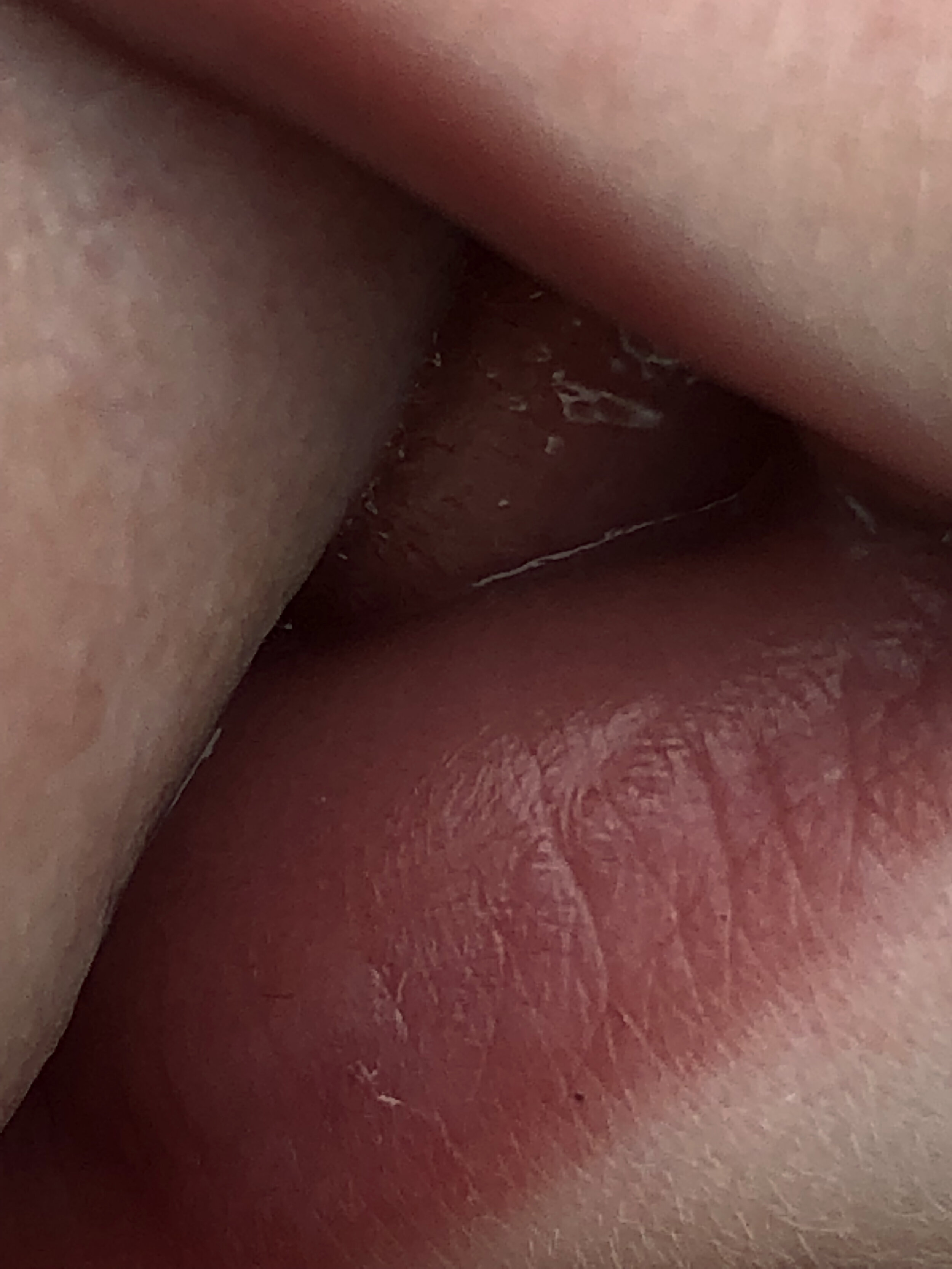LINDSEY PECK SCHERLOUM
“Abscission,” Video by Lindsey Peck Scherloum, 2020
The full Abscission video piece can be viewed in person at the Carlow University Art Gallery.
In a 21st century western culture where motherhood has transformed in response to our now traditional habit of living separate from our families, google searches provide the advice our parents and siblings once shared, and video messages and FaceTime offer the engagement relatives and friends once had on a regular physical basis.
It is easy to be alone, stay in the house all day with the baby, delight in watching her, laud my own simple accomplishments at parenting, mesmerized the way I am watching a fire. I take videos to send my my parents, to her great grandmother, but I get distracted and forget until I spend hours watching them months later. It is easy to turn inward, to revel in this world of two, down to the thin curved lines drawn between our bodies, and meditate on the thinness of our skin now permanently separating us as two.
This new work, Abscission, is my latest exploration into the female form, dating from a year ago when I entered motherhood and began documenting that intimacy of two bodies, mother and child, in their early metaphysical separation. Abscission is the shedding of a part of the body, like a leaf from a tree, or a the petals of a flower, and on a cellular level is the final step of cell division, the moment when the membrane dividing a cell in two separates into equal parts, and each daughter cell is its own entity.
This video form of Abscission is a series of very close abstracted portraits taken in the secret maternal moments of skin to skin and shown in slow motion, juxtaposed against a barrage of images documenting the lonely gaze of a new mother and the slow metaphysical separation. These sequences also point to the iPhone as a tool to memorialize this solitary experience, and connect with others. The segments alternate back and forth creating a rhythm, moments of slow breath and calm amid the frenetic flood of images that repeatedly span birth to one year in a matter o of seconds. The video is approximately 5 minutes long, and intended to be projected on a loop. A short section can be seen here: https://vimeo.com/394581951/c376cc2eae
The full Abscission video piece can be viewed in person at the Carlow University Art Gallery.
My work use photography, video, installation, and performance to create experiences that provoke narratives as a means to connect audiences across identity. I have been working in media images for over twenty years focusing heavily in my early work on the female body in context and strongly influenced by Cindy Sherman and Ruth Bernhard. This was revisited in my MFA thesis and subsequent gallery show, Faster Than Walking, where I use experiences hitch-hiking across America to examine cultural taboos, obsessions, and perceived threats related to transporting a female body through space.
With a lifelong interest in storytelling, I seek unusual opportunities to learn from others and create spaces for uncomfortable stories to be heard. In that thread, I put this meditation on womanhood into the forefront—acknowledging and examining the intense intimacy of the maternal bond.
I hold a BA in interdisciplinary studies from New York University's Gallatin School with a focus on studio art and anthropology, and an MFA in creative non-fiction writing from Chatham University.
I have worked on collaborative storytelling projects at the Braddock Youth Project, the Mattress Factory, Pittsburgh Center for the Arts, Carnegie Museums of Art and Natural History, with people incarcerated at Allegheny County Jail and PA State Correctional Institute, and a community of endangered language speakers in Kenya. As resident artist at United Somali Bantu of Greater Pittsburgh, through Welcome Pittsburgh and the Office of Public Art I worked collaboratively with extended refugee families to create short documentaries that connect them to their history and their neighbors.
My work has been shown in spaces across the US including the Children’s Museum of Pittsburgh, Carnegie Museum of Art, and the National Mississippi River Museum and Aquarium, and has been published in journals including Hot Metal Bridge and Fiber Art Now.
